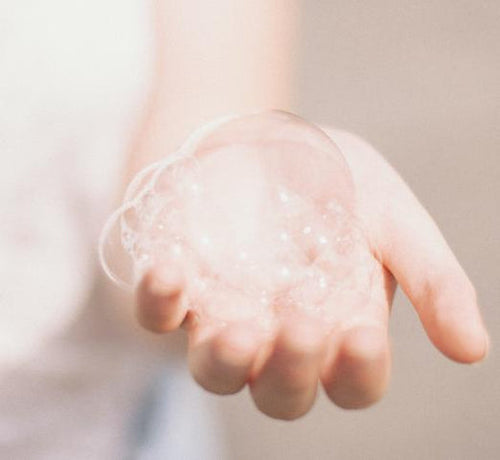Understanding the Differences Between Contact Dermatitis and Atopic Dermatitis
Dermatitis is an inflammation of the skin characterized by redness, itching, and even blisters. It can be triggered by various factors such as allergies, exposure to irritants, stress, or simply genetic predisposition.
Understanding dermatitis
Understanding these different aspects of dermatitis is crucial for parents, as it will allow you to better recognize symptoms in your children and take preventative measures to avoid known triggers. It will also help you choose the right skin care products for your children, avoiding potentially irritating substances and favoring solutions adapted to the sensitivity of our little ones' skin.
Dermatitis: characteristics and differences between its forms
Dermatitis comes in different forms, two of the most common being contact dermatitis and atopic dermatitis.
Contact dermatitis in babies
Contact dermatitis is a skin reaction caused by direct contact with an irritant or allergen. Symptoms can include redness and itching, usually appearing on exposed areas of skin. The most common allergens are nickel, chemicals found in certain detergents, and certain foods. To prevent contact dermatitis, it is recommended to avoid contact with irritants and to use products suitable for the sensitive skin of both children and adults.
Atopic dermatitis in babies
Conversely, atopic dermatitis is a more complex form that is often associated with a family history. It affects up to 25% of children and 2 to 3% of adults. In fact, 90% of children develop atopic dermatitis before the age of 5. It is characterized by periods of flare-ups and remissions, with symptoms such as intense itching, red, scaly patches, and dry, cracked skin. In babies and young children, the most commonly affected areas are the face, scalp, buttocks, and flexion areas (elbows and knees).
What are the best treatment approaches?
Treatments for dermatitis in infants and children vary depending on its type and include several important aspects.
Prevention plays a very important role, especially in children with a family history of dermatitis. Therefore, regular use of emollient creams is recommended, which can reduce the risk of developing atopic dermatitis.
During flare-ups, your family doctor may prescribe topical corticosteroids to reduce inflammation and relieve symptoms.
Aside from flare-ups, it's essential to have a proper skincare routine. Bath time should be limited to 10 minutes and the temperature should be between 35 and 37°C (95 and 98.6°F). Using a gentle, moisturizing cleanser, such as a cleansing oil, is recommended.
After bathing, it is best to gently pat the skin rather than rubbing it to avoid further irritating already sensitized skin.
Regular application of an emollient is also essential to keep the skin hydrated and protect the skin barrier. This step helps relieve itching and prevent flare-ups.
It is also important to choose clothing made of soft, breathable, and hypoallergenic fabrics, avoid known irritants, and maintain a cool, humid environment to help reduce symptoms.
And what about hands in all this?
Dermatitis can also affect the hands, causing redness, itching, cracks, and even scaling. The causes are similar to those of dermatitis elsewhere on the body, including allergies, exposure to irritants, or simply genetic predisposition. Because adults often come into contact with irritants or allergens, such as household cleaners, chemicals, or metals, they are more likely to develop hand dermatitis.
To manage hand rashes, it's advisable to take certain precautions. This includes using gentle cleansers and, most importantly, regularly applying moisturizer to keep your skin supple and hydrated. Wearing gloves when performing activities that expose your hands to irritants, such as cleaning the house, can provide additional protection against hand dermatitis. By following these tips, you can reduce symptoms and improve hand comfort.
As soon as possible, call a professional
It is essential for parents whose children suffer from atopic dermatitis to consult a healthcare professional, such as a pediatrician or dermatologist, to obtain an accurate diagnosis and personalized treatment.
It is also important to identify potential triggers by monitoring symptoms.
By following these practical tips and using the right skin care products, it is possible to effectively manage dermatitis in children and improve their daily lives.
Dermatitis can be difficult to manage, but with the right advice, you can help your child live with it more easily. At Mustela Canada, we're here to support you with tailored skin care products, including our Stelopia range. Together, let's work to provide your children with the gentle care they deserve.




